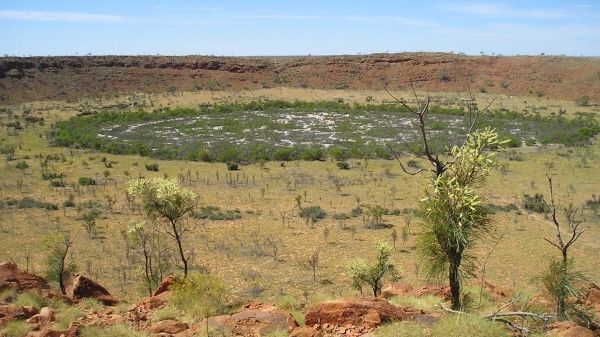Meteorite impact site much younger than previously thought.
A study by an international research team led by Professor Tim Barrows from the University of Wollongong has thrown new light on how frequently large meteorites strike the Earth.
The research focused on Wolfe Creek Crater, one of the largest meteorite impact craters in Australia and the second largest on Earth from which meteorite fragments have been recovered (the largest is Meteor Crater in Arizona in the United States).
Located in a remote part of Western Australia, on the edge of the Great Sandy Desert and about 145 kilometres from Halls Creek via the Tanami Road, Wolfe Creek Crater was formed by a meteorite estimated to be about 15 metres in diameter and weighing around 14,000 tonnes.
The meteorite was probably travelling at 17 kilometres per second and struck with the force of 0.54 megatons of TNT. Just when that impact occurred, however, had not been well understood. The new study, published in the journal Meteoritics & Planetary Science, found that the impact most likely occurred around 120,000 years ago – much more recently than the previous estimate of 300,000 years ago.
Debris from outer space constantly bombards the Earth, but only the biggest objects survive the journey through the atmosphere to hit the planet’s surface and leave a crater. Having an accurate age for the Wolfe Creek Crater impact enabled the researchers to calculate how frequently such impacts occur.
Continue reading at University of Wollongong
Image via University of Wollongong




